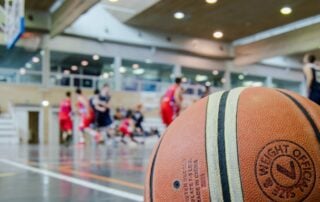
As a physical therapist, I have seen many patients who have suffered from ACL tears. It is a common sports injury that affects athletes of all levels and ages. The anterior cruciate ligament (ACL) plays a vital role in stabilizing the knee joint and maintaining proper leg alignment. An injury to the ACL can cause severe damage to the knee joint and may require surgery to regain full function. In this blog, we will discuss the causes, symptoms, and treatment options for ACL tears.
Cause of ACL Tears:
ACL tears are often caused by sudden twists or pivots on a weight-bearing knee, such as changing direction rapidly while running or jumping, or stopping suddenly. The injury can also occur during a direct impact or collision to the side of the knee. Women are more likely to experience ACL tears than men. Studies suggest that the biomechanics of women’s knees, including wider hips and increased angle from the thigh bone to the knee, may contribute to the higher incidence of ACL tears.
Symptoms of ACL Tears:
The most common symptoms of an ACL tear include a sudden, popping sensation in the knee, severe pain, swelling, and instability in the knee joint. The knee may also feel like it’s “giving out” or buckling when walking or running. In some cases, the injured person may not feel any pain or instability in the knee, making it difficult to detect the injury. If you experience any of these symptoms, consult a medical professional immediately.
Treatment for ACL Tears:
The treatment for an ACL tear depends on the severity of the injury. For minor injuries, rest, ice, and physical therapy may be enough to relieve the symptoms and restore the function of the knee. For more severe injuries, surgery may be required to repair or reconstruct the damaged ACL. Surgery involves replacing the torn ligament with a new one, typically taken from another part of the body or a cadaver. There are newer surgical procedures in the United States in recent years, which involved placing an implant or a “bridge” across the ACL so that it can regenerate or repair itself. This is called the Bridge Enhanced ACL Repair or BEAR Procedure.
Post-surgery, physical therapy is necessary to regain full function and strength of the knee. There are several stages of PT during this recovery process to ensure that the knee returns to normal function properly. Skipping or rushing these phases could result in reinjury or a new injury! Initial therapy includes range of motion and walking. The next step is early strengthening to help with return to daily tasks. Then the progression to power and endurance activities and an eventual return-to-sport. It may seem like this process is quite long, but this is to ensure safe return to activity and again, avoid re-injury.
Preventive measures for ACL Tears:
There are several preventive measures that can help reduce the risk of ACL tears. Strengthening exercises for the thigh muscles and lower leg muscles can help stabilize the knee joint, reducing the risk of injury. Wearing proper footwear, performing proper warm-up and stretching, and maintaining proper body alignment during sports activities also help to prevent ACL injuries.
ACL tears are painful and common injury that can happen to anyone. Understanding the causes, symptoms, and treatment options for an ACL tear is essential for a prompt and effective recovery. As a physical therapist, I encourage everyone to take preventive measures to avoid ACL tears and seek medical attention immediately if they suspect an injury. With the right treatment and physical therapy, you can regain full function and strength of the knee, and return to your favorite sports activities.
Keep Reading…
Spring Back Into Motion: Preventing Overuse Injuries
As flowers bloom and the days get longer, it's natural [...]
Brain Injury Awareness Month | Physical Therapy Can Aid In Recovery
March is Brain Injury Awareness Month—a time dedicated to [...]
Understanding ACL Tears: Causes, Symptoms and Treatment
As a physical therapist, I have seen many patients [...]
5 Reasons To Not Skip Stretching
Physical therapists believe in the importance of stretching and [...]
Common Basketball Injuries And Tips to Prevent Them
Basketball is the most popular youth sport in the [...]
Common Ski Injuries and Tips to Stay Safe on the Slopes
Winter is here and snow has finally started [...]







